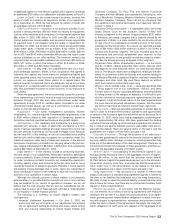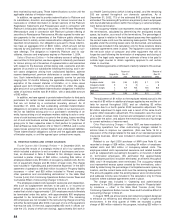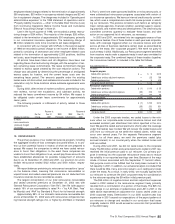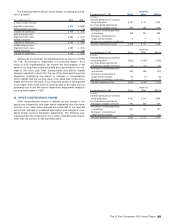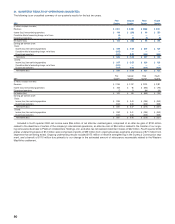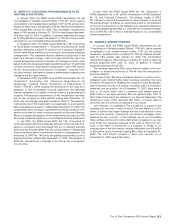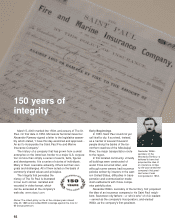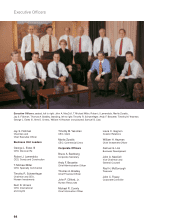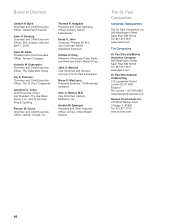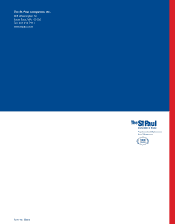Travelers 2002 Annual Report Download - page 95
Download and view the complete annual report
Please find page 95 of the 2002 Travelers annual report below. You can navigate through the pages in the report by either clicking on the pages listed below, or by using the keyword search tool below to find specific information within the annual report.
“Early beginnings” tells of how, in spite of a national
economic panic, Civil War and other challenges, these fore-
fathers established a new company to serve the insurance
needs of a growing frontier community.
Covering a Catastrophe
By late summer 1871, the fire threat to Chicago’s dry and
brittle wooden structures had become critical. On October 8,
violent scorching winds fed the flames that destroyed
18 towns in Wisconsin and Michigan. Those same winds
reached Chicago, and the Great Fire began at 9 p.m. The
fire raged for 30 hours, killed 300 people and destroyed
nearly 17,500 buildings, leveling over three square miles of
the center of the city. The disaster left 100,000 residents –
one-third of the population – homeless. The price tag for
property damages totaled an estimated $196 million –
$3 billion in today’s dollars.
More than 200 insurance companies suffered losses
from the fire, and more than 80 of them settled their losses
only in part, some for as low as four cents on the dollar.
Fifty insurance companies went bankrupt, leaving their
policyholders helpless. The St. Paul was one of the few
companies to pay its losses dollar-for-dollar.
“Covering a Catastrophe” tells of how, for the young
St. Paul Fire and Marine Insurance Company, the Chicago
fire provided a “moment of truth” that would help foster a
reputation for fairness and integrity to policyholders.
“Mr. St. Paul”
Early on April 18, 1906, young Phil Heuer, of the San
Francisco office of St. Paul Fire and Marine, along with the
rest of that city was violently awakened by a thunder-like
roar and a “convulsive shuddering” of a terrible earthquake.
After making sure that his family and home weren’t in imme-
diate danger, he left to check on the offices of St. Paul Fire
and Marine, carefully navigating his way over fallen timbers,
bricks and collapsed building facades, wending his way
through the city’s Financial District.
“Mr. St. Paul” tells of Heuer’s heroics that day, which
marked the beginning of a 48-year
career with the company and epito-
mized the dedication of an employee
whose favorite saying was, “What I
like I can sell and I like The St. Paul.”
“Letters from Home”
Throughout The St. Paul’s 150
years, employees have displayed a
commitment to serving their company,
their fellow employees, and their com-
munities. “Letters from Home” tells
how this spirit was perhaps most
vividly demonstrated, during World War II, when employees
pulled together to help in the war effort.
More than 350 employees served in the armed forces
during that war, and six gave their lives in service to their
country. Many shared their thoughts, and kept in touch with
their fellow employees, in letters published in the company’s
employee publication of the time, the “Saint Paul Letter.”
Integrity can be demonstrated in many ways, and the
150-year history of The St. Paul presents many different
stories of integrity. In whatever way it is demonstrated, that
integrity is the foundation on which the company has built its
success and reputation.
Access the “Stories of Integrity” at www.stpaul.com
The St. Paul Companies 2002 Annual Report 93
The Great Chicago Fire was perhaps the first major challenge for
St. Paul Fire and Marine Insurance Company. While the disaster
put many insurers out of business, The St. Paul paid its claims in
full – and began to build its reputation for financial strength.
During World War II, The St. Paul Letter, the company’s monthly
newsletter, kept service men and women in touch with what was
happening back home.


